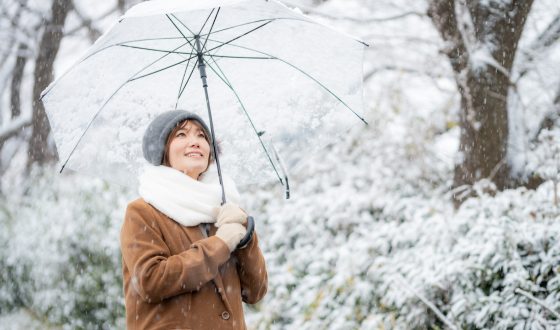When is Spring in Japan? A Guide to Witnessing the Enchanting Cherry Blossoms
Welcome to our comprehensive guide on “When is Spring in Japan.” Japan’s spring season is a magical time of renewal and natural beauty that captivates visitors from around the world. As the chilly winter days fade away, the country transforms into a vibrant canvas of colorful blossoms and verdant landscapes.
In this blog, we will delve into the intricacies of Japan’s springtime, exploring the blooming of cherry blossoms (sakura), the various seasonal events, and the best times to witness this awe-inspiring spectacle. Whether you’re planning a dreamy hanami (flower viewing) trip or simply curious about the enchanting allure of spring in Japan, join us as we unveil the secrets and wonders of this beloved season.
Let’s embark on a journey through Japan’s springtime magic together!
When is Spring in Japan?
Spring in Japan typically starts in March and lasts until May. The exact timing of the season’s arrival varies depending on the region within Japan. The southern regions, such as Kyushu and Okinawa, experience an earlier spring, with cherry blossoms (sakura) blooming as early as late March. On the other hand, the northern regions, like Hokkaido, witness a delayed spring, with cherry blossoms typically blooming in early May.
The cherry blossoms’ blooming is the most well-known representation of spring in Japan, and it is a national holiday. The cherry blossoms’ peak bloom, known as “mankai,” is a brief period when the flowers are in full bloom and at their most stunning. This spectacle usually lasts for only a week or two in each location.
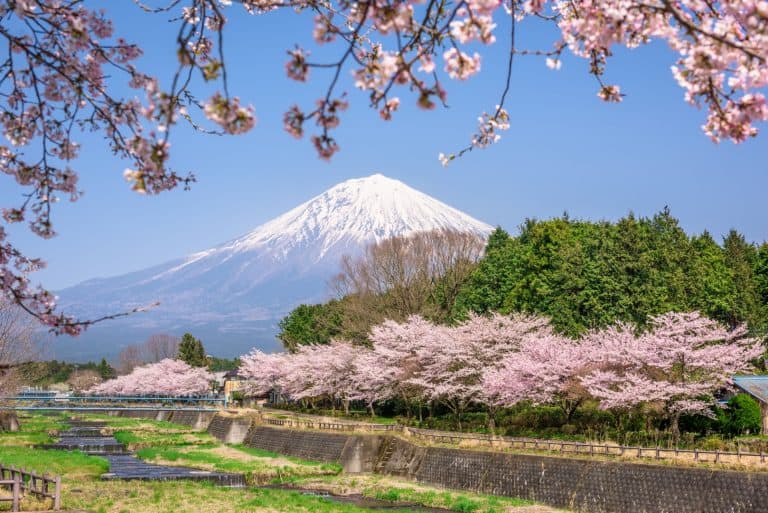
The cherry blossoms’ blooming is the most well-known representation of spring in Japan, and it is a national holiday. (Source: Internet)
Travelers frequently consult the Japan Meteorological Corporation’s sakura zensen (cherry blossom forecast) in order to maximize the cherry blossom season. This forecast provides estimated bloom dates for different regions, helping visitors plan their hanami (flower viewing) trips to coincide with the peak bloom.
In Japan, spring is a lovely season when the nation’s landscapes come alive with vivid hues and people gather to appreciate nature’s splendor. Whether you visit during the early, middle, or late spring, you’re sure to be captivated by the charm and allure of this enchanting season.
Spring Weather in Japan
Spring weather in Japan is a delightful season characterized by milder temperatures, blooming flowers, and a sense of renewal. Typically, the season lasts from March through May and is accompanied by a diversity of weather patterns around the nation.
1. March
- In early March, winter temperatures may still linger in some regions, especially in the northern parts of Japan. However, as the month progresses, temperatures begin to rise, and signs of spring become more apparent.
- March is known for its cherry blossoms (sakura) season, and in the southern regions, such as Kyushu and Okinawa, cherry blossoms may start blooming towards the end of the month.
- March can still bring occasional rain showers and cool evenings, so it’s advisable to dress in layers and carry an umbrella.

In early March, winter temperatures may still linger in some regions, especially in the northern parts of Japan. (Source: Internet)
2. April
- April is one of the most popular months to visit Japan, as cherry blossoms reach their peak bloom in various parts of the country. The sight of fully bloomed cherry blossoms is a breathtaking experience and attracts both locals and tourists alike.
- April is a great month for outdoor activities and tourism because the weather is often nice and warm.
- Rain showers are common during April, particularly towards the end of the month, so it’s advisable to be prepared with rain gear.
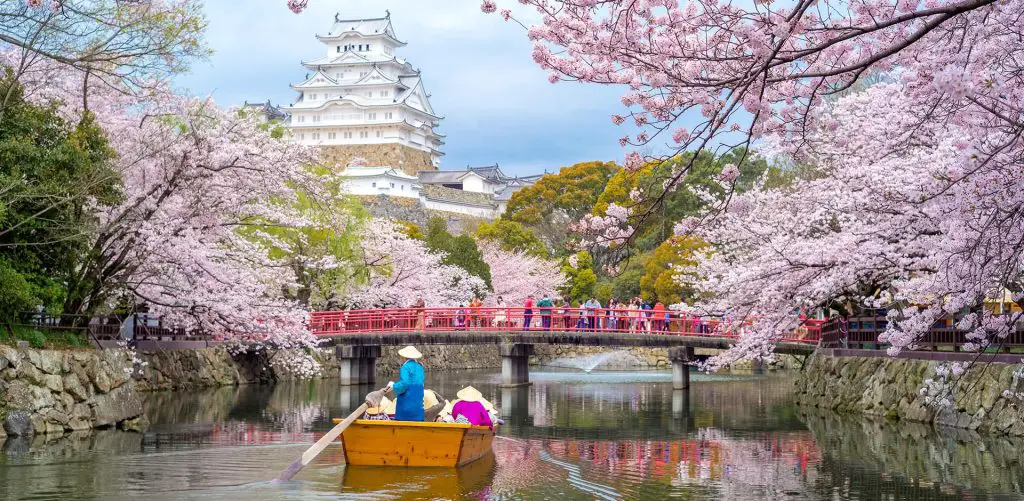
April is one of the most popular months to visit Japan, as cherry blossoms reach their peak bloom in various parts of the country. (Source: Internet)
3. May
- May marks the transition from spring to early summer, with temperatures gradually becoming warmer.
- Cherry blossoms continue to bloom in the northern regions, and other flowers, such as azaleas and wisteria, also come into full bloom during this month.
- May is a comfortable time to explore Japan, as the weather is generally mild and not yet too hot or humid.
- Towards the end of May, the rainy season (tsuyu) begins in southern regions like Okinawa and gradually moves northward.
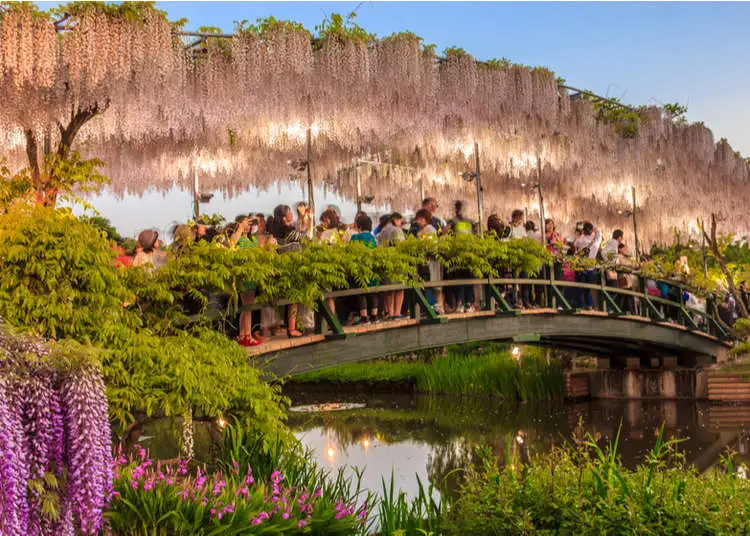
May marks the transition from spring to early summer, with temperatures gradually becoming warmer. (Source: Internet)
Overall, spring weather in Japan is pleasant and offers a perfect balance between the coolness of winter and the heat of summer. It is a picturesque season, with colorful landscapes and the opportunity to experience the iconic cherry blossoms, making it a popular time for both domestic and international travelers to visit Japan.
You can also like:
- Japanese Firework Festival in 2023: A Visual Extravaganza of Lights and Colors!
- 6 Types of Tuna for Sushi: Everything You Need to Know
- Step-by-Step Guide: How to Add Disney Passes to Apple Wallet for Seamless Access
How Should I Wear in Tokyo in the Spring?
It’s important to pack light and be ready for a variety of weather while visiting Tokyo in the spring. Spring in Tokyo is a delightful season, with mild temperatures and blooming cherry blossoms, but it can also bring occasional rain showers. Here are some clothing essentials to consider when packing for your trip to Tokyo in spring:
- Layers: Spring weather in Tokyo can be quite changeable, so dressing in layers is key. Add a jacket or cardigan that you can remove quickly if it gets too warm during the day over a light sweater or long sleeve shirt as a base layer.
- T-shirts and Tops: Pack a mix of short-sleeve and long-sleeve shirts to accommodate different temperature variations. Cotton and breathable fabrics are ideal for staying comfortable throughout the day.
- Light Jacket or Coat: Bring a lightweight jacket or coat for cooler mornings and evenings. Opt for a water-resistant option to stay dry during occasional spring showers.
- Scarf or Shawl: A lightweight scarf or shawl can be a versatile accessory, providing extra warmth when needed and serving as a stylish addition to your outfit.
- Comfortable Bottoms: Choose comfortable and versatile bottoms like jeans, trousers, or skirts. These can be paired with different tops and work well for exploring Tokyo’s diverse neighborhoods.
- Comfortable Shoes: Tokyo is a city made for walking, so bring comfortable shoes suitable for exploring. Sneakers or walking shoes are a popular choice, especially if you plan to visit multiple attractions in a day.
- Umbrella or Raincoat: Be prepared for occasional rain showers by packing a compact umbrella or a light raincoat.
- Sunscreen and Sunglasses: Spring sun in Tokyo can be bright, so don’t forget to protect your skin with sunscreen and wear sunglasses for added comfort.
- Light Accessories: Consider bringing a wide-brimmed hat and a small crossbody bag to keep your essentials handy while exploring the city.
- Pajamas and Sleepwear: Choose lightweight and breathable sleepwear for comfortable rest at night.
Spring’s Events in Japan
Spring in Japan is a season of vibrant festivities and cultural celebrations, offering a unique opportunity to immerse oneself in the country’s rich traditions and heritage. Some of the most captivating events during spring include:
- Cherry Blossom Festivals (Sakura Matsuri): Celebrated throughout Japan, cherry blossom festivals are a highlight of spring. From late March to early April, parks, shrines, and temples are adorned with stunning cherry blossoms. Hanami (flower viewing) gatherings are a cherished tradition during this time, where locals and tourists gather for picnics beneath the blooming trees.
- Golden Week: Golden Week is a series of national holidays from late April to early May, providing an extended vacation period for many Japanese people. It includes Showa Day (April 29), Constitution Memorial Day (May 3), Greenery Day (May 4), and Children’s Day (May 5). Many use this time to travel, and popular destinations can get crowded.
- Kanda Matsuri: Held every two years in Tokyo, Kanda Matsuri is one of the city’s largest festivals. It features colorful processions, portable shrines, and traditional performances. Locals don traditional attire, and the vibrant atmosphere is infectious.
- Sanja Matsuri: Taking place in May at the Asakusa Shrine in Tokyo, Sanja Matsuri is one of the city’s major Shinto festivals. The festivities include lively parades, taiko drum performances, and a joyous atmosphere.
- Aoi Matsuri: Held on May 15 in Kyoto, Aoi Matsuri is one of the city’s oldest and most elegant festivals. Participants dressed in Heian-era costumes parade through the streets, making it a beautiful spectacle.
- Wisteria Festivals: During April and May, various wisteria festivals are celebrated across Japan. Notable locations include the Ashikaga Flower Park in Tochigi and the Kawachi Fuji-en in Fukuoka, where visitors can stroll through enchanting wisteria tunnels.
- Shunki Reitaisai: Celebrated at the Imperial Palace in Tokyo in early April, Shunki Reitaisai is an event to commemorate the Emperor’s birthday. The Imperial Family makes public appearances, and a parade is held to celebrate the occasion.
- Tea Ceremonies: Spring is an excellent time to experience traditional tea ceremonies. Many tea houses and cultural centers offer opportunities for visitors to participate in this revered Japanese ritual.
These spring events in Japan provide a glimpse into the country’s fascinating culture and are a fantastic way to experience the joy and spirit of the season. Whether marveling at cherry blossoms, partaking in grand festivals, or engaging in cultural traditions, spring in Japan promises unforgettable memories and a deeper understanding of its rich heritage.
Spring Food and Drinks
Spring in Japan brings a delectable array of seasonal food and drinks that celebrate the fresh and vibrant flavors of the season. Some of the delightful spring culinary offerings include:
1. Food
- Sakura (Cherry Blossom) Sweets: During cherry blossom season, you’ll find a variety of sakura-themed sweets, such as sakura mochi (rice cakes filled with sweet red bean paste and wrapped in pickled cherry leaves) and sakura-flavored cookies, cakes, and ice cream.
- Tempura: Spring is an excellent time to savor tempura made with fresh seasonal vegetables and seafood. Asparagus, bamboo shoots, and young green soybeans (edamame) are popular tempura choices during this time.
- Soba Noodles: As the weather warms up, many Japanese people enjoy eating cold soba noodles. Known as “zaru soba,” these noodles are served with a dipping sauce and are a refreshing and light option for spring dining.
- Spring Vegetables: Spring brings an abundance of fresh and tender vegetables, including new potatoes, spring onions, bamboo shoots, and fiddlehead ferns (kogomi).
- Spring Seafood: Seasonal seafood like fresh river fish and cherry salmon (sakuramasu) are enjoyed during springtime in Japan.
- Strawberry Delights: Japan’s strawberry season peaks in spring, and you’ll find an array of strawberry desserts and treats, such as strawberry shortcake, strawberry parfaits, and chocolate-dipped strawberries.
- Hanami Bento: During cherry blossom viewing (hanami) picnics, locals often enjoy hanami bento, which are beautifully arranged boxed lunches filled with an assortment of colorful and delicious dishes.
2. Drinks
- Sakura-Flavored Beverages: In addition to sweets, you’ll find sakura-flavored beverages like sakura tea, sakura lattes, and even sakura-infused cocktails.
- Matcha Green Tea: Matcha is a popular drink year-round in Japan, but it’s especially refreshing during the spring season. Enjoy a cup of traditional matcha tea or try matcha-flavored desserts.
- Sakura-Infused Sake: Some sake breweries create limited-edition sakura-infused sake during cherry blossom season, adding a floral and delicate flavor to the traditional Japanese rice wine.
- Umeshu (Plum Wine): As plum blossoms also bloom in spring, umeshu, a sweet and tangy plum wine, is a popular choice for the season.
Whether it’s indulging in sakura-themed treats, savoring fresh spring vegetables, or enjoying seasonal beverages, exploring the culinary delights of spring in Japan is a feast for the senses. Embrace the flavors of the season and let the exquisite tastes of spring add to your unforgettable journey in Japan.
A Littles Warning About Spring in Japan
While spring in Japan is undoubtedly a beautiful and enchanting season, there are a few things to be aware of to ensure a pleasant and safe experience:
- Crowds: Spring is one of the most popular times for tourists to visit Japan, especially during cherry blossom season. As a result, popular hanami spots and tourist attractions can get crowded, making it important to plan ahead and arrive early to secure a good viewing spot.
- Weather Variability: Spring weather in Japan can be unpredictable, with sudden temperature changes and occasional rain showers. Be prepared by dressing in layers and bringing an umbrella or raincoat.
- Allergies: Spring also brings pollen from various blooming trees and flowers, which can trigger allergies in some individuals. If you suffer from seasonal allergies, consider bringing allergy medication and consult with a healthcare professional before your trip.
- Golden Week: Golden Week, a series of national holidays in late April and early May, is a popular travel period in Japan. As a result, transportation and popular attractions may be busier than usual. Book accommodations and transportation in advance to secure your preferred options.
- Limited Accommodations: Due to the popularity of cherry blossom season, accommodations in popular tourist destinations may fill up quickly. It’s advisable to book accommodations well in advance to secure your preferred stay.
- Picnicking Etiquette: If you plan to participate in hanami picnics, be mindful of the park rules and etiquettes. Clean up after yourself and dispose of trash properly to help maintain the beauty of the park for others.
- Hanami After Dark: Some parks and attractions offer evening illuminations of cherry blossoms, known as “yozakura.” While beautiful, these events may attract large crowds, so be prepared for potential congestion and limited space.
- Nature’s Timing: The timing of cherry blossoms’ peak bloom can vary each year, depending on weather conditions. It’s essential to check cherry blossom forecasts and be flexible with your travel dates to catch the best bloom.
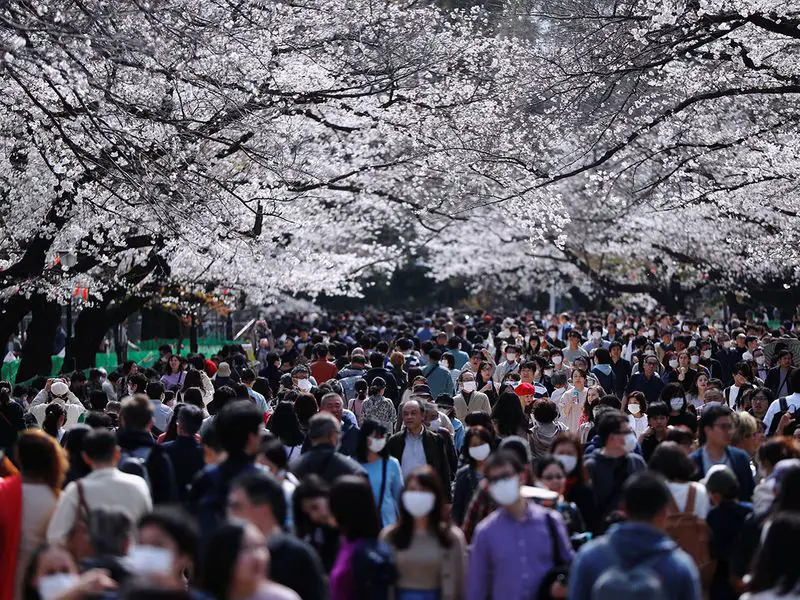
Popular hanami spots and tourist attractions can get crowded, making it important to plan ahead and arrive early to secure a good viewing spot. (Source: Internet)
Despite these warnings, spring in Japan is a remarkable and cherished season that offers a unique cultural experience and an opportunity to witness the breathtaking beauty of cherry blossoms. By planning ahead and being mindful of these considerations, you can make the most of your springtime adventure in Japan.
FAQs
1. What months are spring in Japan?
In Japan, spring typically lasts from March until May. For “ohanami,” or cherry blossom watching, people congregate in large numbers under sakura trees all throughout Japan.
2. Which month is ideal for traveling to Japan?
For the majority of Japan, spring (March to May) is the best and busiest time to visit due to the beautiful weather and cherry blossom season, especially in Tokyo, Kyoto, and Osaka. The wettest months, which typically run from June to mid-July, are when you’ll find the best deals and the fewest tourists.
3. What’s the springtime climate like in Japan?
Temperatures in the springtime often range from 40 to 65 °F (4 to 18 °C), and the weather is notoriously unpredictable. You might still want your winter coat on some days while you might not even need a sweater.
4. When are the cheapest times to visit Japan?
Temperatures range from 30 to 45 F (0 to 8 C) during Japan’s winter, which lasts from late December to mid-March. If you can avoid the holidays, winter is one of the most affordable periods to visit Japan, so it’s perfect for budget travelers. The least crowded time to travel is from mid-January to mid-March after the holidays.
5. Is winter or spring the ideal time to visit Japan?
Japan is best visited between March and May and between September and November since the weather is nice and dry throughout these times. However, springtime in Japan and the spectacular blooming of the cherry blossoms are well known, so you’ll share the area with many other tourists.
6. What time of year is Japan’s tourist off-season?
The months with the fewest foreign visitors are August through December, with September being the least busy. This is the ideal moment if you want to avoid the crowds!
7. What is Japan’s ideal weather like?
The best spots to escape the summer heat are in the northern regions, such as Hokkaido or the Chubu highlands. Be advised that typhoon season, which begins in August and ends in October, impacts southern locales heavily, including Okinawa, Kyushu, and Shikoku.
8. How much does it cost to travel to Japan?
In general, a traveler on a budget can anticipate spending $50 to $100 per day in Japan, whereas a visitor on a midrange budget might anticipate spending $150 to $250 per day. In order to develop a budget that works for you, it’s critical to plan ahead and do your research on activities and prices.
9. When should I go to Kyoto?
Kyoto is best visited in the mildest months of March through May and September through November. However, the colorful fall foliage and the flowering cherry blossoms in the spring are major tourist draws, so plan on paying more for hotels and finding fewer openings.
Conclusion
In conclusion, knowing “When is spring in Japan?” is essential for planning a perfect cherry blossom (sakura) viewing experience. The season varies across the country, with the south experiencing an early bloom and the north seeing a later arrival of cherry blossoms.
Keep an eye on weather forecasts and bloom predictions to time your trip accurately. Whether you visit iconic spots or off-the-beaten-path locations, witnessing the beauty of spring in Japan and its iconic cherry blossoms is an unforgettable experience. Plan your journey wisely and immerse yourself in the magic of hanami during this enchanting season.


